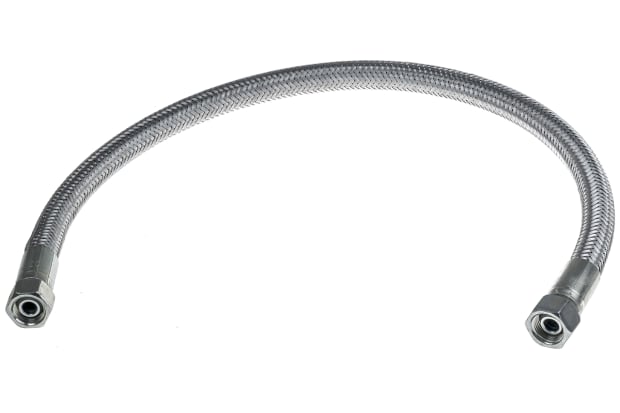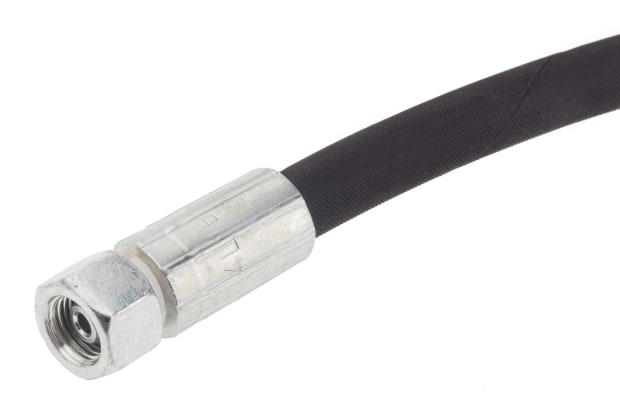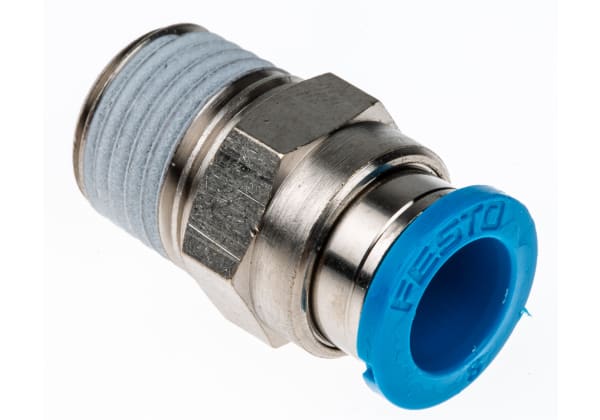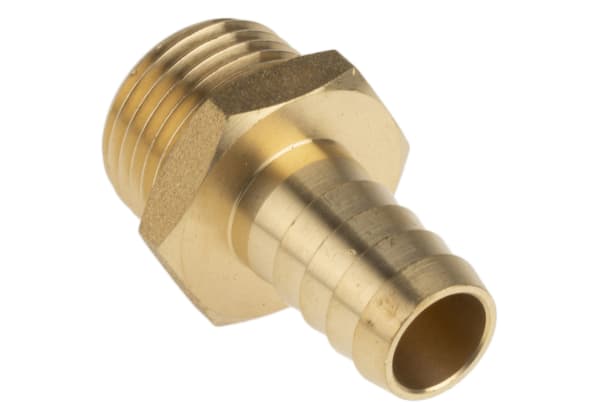- Published 23 Apr 2023
- Last Modified 29 Aug 2023
- 7 min
Hydraulic Hoses: An Essential Guide
From pressure to performance - understanding the role of hydraulic hoses.

If you work in a business that relies on heavy machinery or equipment, it’s important to understand hydraulic hoses. These critical components are used to transfer hydraulic fluid between various parts of a machine. They’re designed to handle high pressure and extreme temperatures, making them an essential part of many industrial processes.
In this article, we’ll take a closer look at hydraulic hoses. We’ll explain what they are, how they work, the different types available, and how to choose the right one for your needs.
What is a Hydraulic Hose?
A hydraulic hose is a flexible tube that’s used to transport hydraulic fluid from one component to another within a hydraulic system. They are typically designed to withstand high-pressure applications and are often reinforced to help prevent the hose from bursting or leaking under pressure.
Hydraulic hoses can be made from a range of different materials, including rubber, thermoplastic, and metal. Each material has unique properties and advantages:
- Rubber hoses are one of the most common types and are often used for low-pressure applications. They are also resistant to heat and corrosion, which makes them ideal for use in harsh environments
- Thermoplastic hoses are another popular choice and are often used in high-pressure applications. They are lightweight, flexible, and resistant to abrasion
- Metal hoses are also available and are often used in applications where high temperature or extreme pressure is a concern. They are durable, long-lasting, and resistant to corrosion, but are less flexible than rubber or thermoplastic hoses
Hydraulic hoses come in various lengths and diameters. Choosing the right hose for your specific application is essential to ensure optimal performance and safety.
What Does a Hydraulic Hose Do?
Hydraulic hoses are used to transfer hydraulic fluid between various parts of a machine.
Hydraulic fluid is a specialised oil that is designed to transfer power under pressure and is often used to power different components, such as hydraulic cylinders or motors.
The hose provides a flexible connection between these components, allowing them to move and operate correctly.
How Do Hydraulic Hoses Work?

Hydraulic hoses work by using hydraulic fluid to transfer force between two different components. When fluid is pressurised, it generates force that can be used to power different components. The hydraulic hose acts as a flexible connection, allowing the fluid to move from one part of the machine to another.
The hose will be connected to the hydraulic components using fittings that are designed to create a tight seal and prevent leaks. When hydraulic fluid is pumped into the hose, it creates pressure that causes the hydraulic components to move or operate. The flexibility of the hose allows the components to move without placing unnecessary strain on the system.
As hydraulic hoses are an integral part of many systems, they must be both designed and maintained properly to ensure they function correctly and prevent potential leaks or failures. This includes selecting the appropriate size and type of hose for the specific application, regularly inspecting it for any signs of wear, and replacing damaged hoses.
Types of Hydraulic Hose
There are several distinct types of hydraulic hose available, each designed for specific applications. Here are the most common types:
- High-Pressure Hydraulic Hoses: These are designed to handle high-pressure applications and are commonly used in heavy machinery, construction equipment, and other industrial applications
- Low-Pressure Hydraulic Hoses: These are designed for applications with lower pressure requirements and are commonly used with small equipment and machinery
- Multi-Spiral Hydraulic Hoses: These have multiple layers of reinforcement material and are designed for applications that require high-pressure resistance and flexibility
Hydraulic Hose Connectors

Hydraulic hose connectors are fittings or couplings used to connect two or more hydraulic hoses or to connect a hose to a hydraulic component such as a pump, cylinder, valve, or motor.
There are several types of hydraulic hose connectors available, including:
- Straight connectors: These are used to connect hoses or components in a straight line
- Elbow connectors: These are used to connect hoses or components at an angle
- Tee connectors: These are used to connect three hoses or components
- Cross connectors: These are used to connect four hoses or components
- Quick-connect connectors: These are used to quickly and easily connect and disconnect hoses or components
Hydraulic hose connectors are typically made of metal, such as steel or brass, and are designed to withstand high pressure and elevated temperatures. It is important to select the right type of connector for your hydraulic system to ensure safe and efficient operation.
Hydraulic Hose Manufacturers
Some of the leading brands of hydraulic hoses include Enerpac, Hi-Force, Parker, SMC, and our in-house brand, RS PRO. These manufacturers offer a wide range of hydraulic hoses for various applications.


